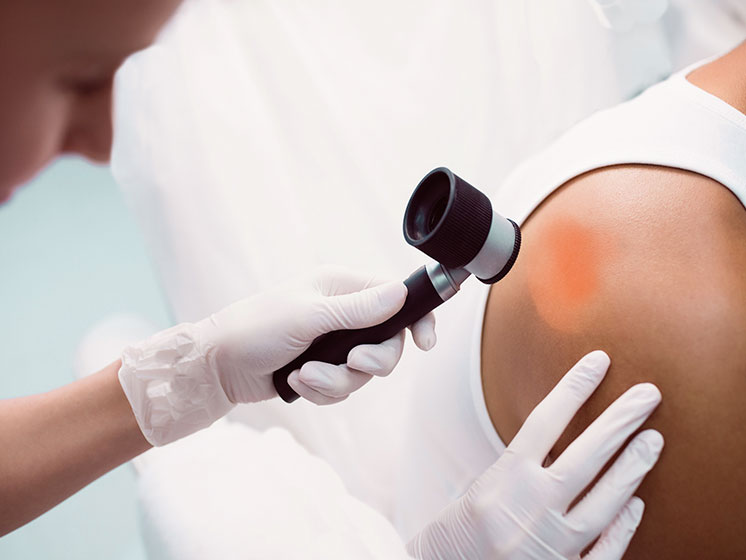Protect yourself from skin cancer with routine screenings.
Wiki Article
Navigating Skin Cancer Cells Treatment: The Crucial Function of Mohs in Modern Dermatology Practices
Skin cancer cells, an overwhelming diagnosis, commonly leaves people grappling with various treatment choices. Amongst these, Mohs surgical procedure stands as a sign in modern-day dermatology, renowned for its careful approach to cancer removal and conservation of bordering healthy tissue. This cutting-edge method promises not just superior cosmetic results however also offers immediate outcomes, alleviating client anxiety. As we explore the intricacies of this procedure, one will certainly value its crucial function in skin cancer cells therapy.Comprehending Skin Cancer Cells: Types and Dangers
There are 3 major kinds of skin cancer: Basal cell cancer, Squamous cell cancer, and Melanoma. It accounts for just about 1% of skin cancer cells situations yet triggers the large bulk of skin cancer cells fatalities. Threat variables consist of reasonable skin, background of sunburn, extreme sun direct exposure, living at high altitudes or close to the equator, having many moles, a family members background of skin cancer cells, and weakened immune system.What Is Mohs Surgery and How It's Changing Skin Cancer Therapy
Despite the numerous treatments currently available for skin cancer cells, Mohs surgical procedure stands apart as a groundbreaking and extremely reliable solution. Named after Frederic E. Mohs, the medical professional that developed the treatment, Mohs surgery is a precise surgical technique made use of to deal with skin cancer. Throughout the procedure, slim layers of cancer-containing skin are gradually gotten rid of and analyzed till only cancer-free tissue continues to be. This method allows the cosmetic surgeon to confirm that all cancer cells have been removed at the time of surgical treatment. This degree of precision, incorporated with the capability to spare as much healthy cells as possible, is transforming skin cancer treatment. Therefore, Mohs surgery has become a keystone of modern dermatology techniques.
The Benefits of Mohs Surgical Treatment Over Typical Skin Cancer Therapies
Building on the cutting-edge nature of Mohs surgical treatment, it's critical to consider its countless advantages over conventional skin cancer treatments. Unlike conventional procedures, Mohs offers a higher treatment rate, frequently reaching 99% for novice treatments and 94% for persistent cancers cells. This accuracy is due to its one-of-a-kind technique of progressively eliminating and examining tissue layers until just cancer-free cells remain (chemical peel). Additionally, it decreases damage to healthy skin, resulting in this hyperlink less scarring and improved aesthetic outcomes. Mohs additionally supplies prompt outcomes, eliminating the anxiety-ridden wait common with various other approaches. Finally, it's cost-effective, as the surgery and microscopic evaluation happen concurrently, getting rid of the requirement for extra research laboratory solutions. Therefore, Mohs stands for a considerable innovation in dermatological techniques.
The Procedure of Mohs Surgical Treatment: What to Anticipate Throughout the Process

Potential Side Results and Post-Operative Care of Mohs Surgical Procedure
Undergoing Mohs surgical treatment, like any kind of various other surgery, entails potential adverse effects that like it patients must understand. Usual adverse effects include pain, bruising, and swelling at the surgical procedure website. These are generally temporary and convenient with non-prescription discomfort medication and ice packs. In unusual cases, people may experience infection, bleeding, or a sensitive response to the anesthetic. Post-operative treatment is essential to recovery and reducing adverse effects. This normally includes keeping the wound clean and dry, taking prescribed drugs, and preventing exhausting activities. People must also participate in all follow-up visits YOURURL.com for injury treatment and surveillance. In many cases, additional therapies might be required to make certain complete removal of the cancerous cells. Sticking to these post-operative treatment standards can significantly boost recovery and end results.Conclusion

Report this wiki page